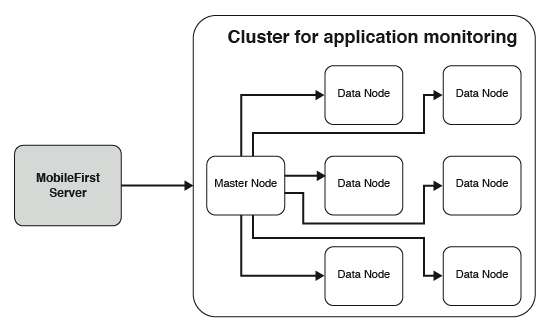Clustering terminology
Learn about clustering terminology for the MPF Operational Analytics.
- Cluster
- A collection of one or more master and data nodes.
- Master Node
- Coordinator of the cluster. Manages the distribution of shards and keeps track of all nodes in the cluster. There can be more than one master node. If a master node fails, then a new node that is marked as a master node is automatically elected as a new master node. The cluster cannot operate without at least one master node.
- Data Node
- Workhorse of the cluster. Stores data and processes incoming search and index requests. A node can act as both a data node and a master node.
- Shard
- Each data node stores data in a shard. For more information about shards, see Understand shards.
- Replica shard
- Each shard can have any number of replicas. Replicas are used to ensure high availability in the case that a node is no longer available. For more information about replicas, see Understand replicas.
The following image shows a basic clustering topology:

Data can be forwarded from the MobileFirst Server to any node in the server. The MobileFirst Server does not have to point to a master node.
In development, a cluster containing one node and one shard is sufficient. The single node acts as the master and data nodes.
In production, it is ideal to have multiple nodes that perform specific functions to ensure high availability and performance.
- Understand shards
Learn about shards in the MPF Operational Analytics. - Understand replicas
Learn about replicas in the MPF Operational Analytics.
Parent topic: Production deployment and clustering